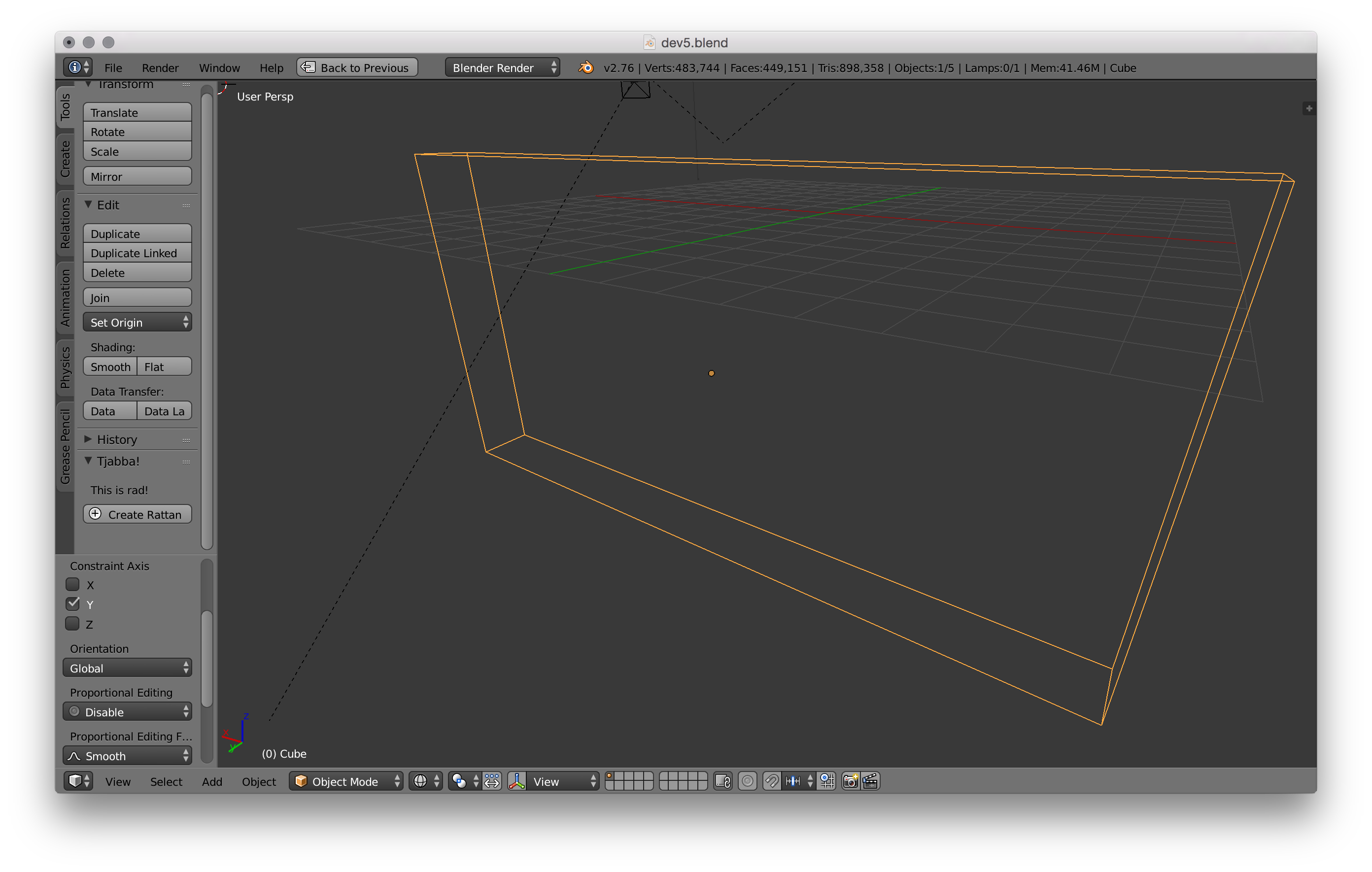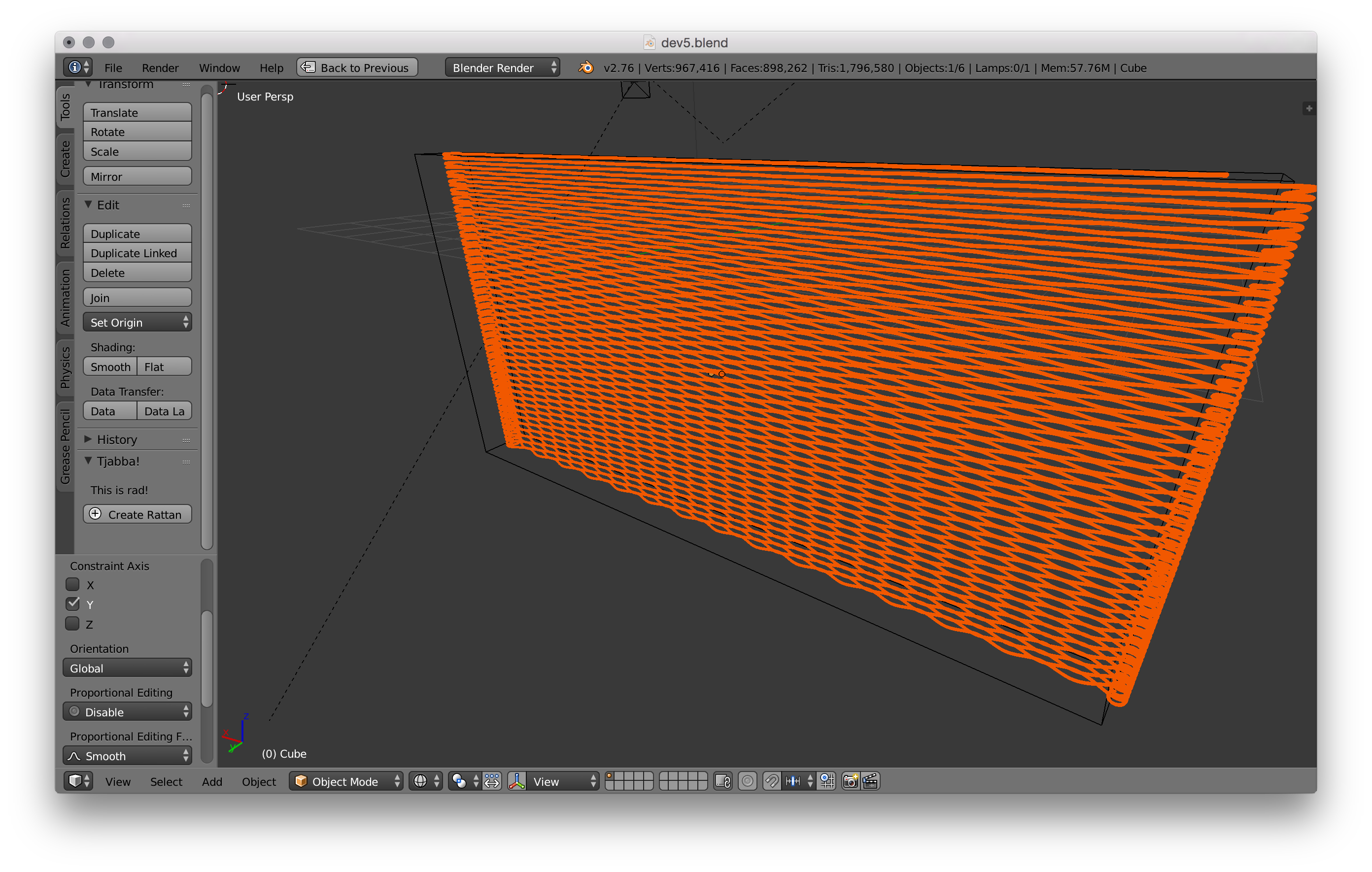Rattan transforms
The latest thing we did was to refactor the code so it generates att geometry in a [0,1] UV-space and then uses a supplied transform-function to map this surface into it’s final form. The transform-function can be completely arbitrary. Right now it just takes scaling and position from the selected object and creates a linear transform using those values.
It takes input as:

And produces this output:

But it is possible to create any transform function we would like. The question now is what to use as input. Choosing the right set of inputs is crucial to make our tool useful for the artist. If we make the wrong choice our tool will be useless. We want to provide as much control over the final geometry as possible but still make it not to tedious. We need the right input to be able to generate a “good” transform-function. For some value of “good”. Thats one of the questions, it’s not so easy to know what “good” means in this context.

Here is an example render with a non-linear transform-function, in this case two different quadric functions in the Y and Z-axis.